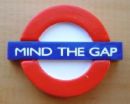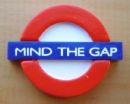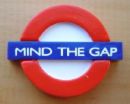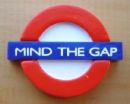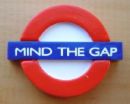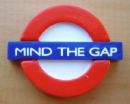 Last Call for Sanity in Face of Christo-Fascism,
Last Call for Sanity in Face of Christo-Fascism,
Chris Hedges
Of all the books I have read, inclusive of a good number on religion, on knowledge, and on the pathologies of power, this book is perhaps the single clearest, most up to date, and most compelling definition of the extreme right in America as the world's new fascists.
I created the image that I am uploading with the review several years back, when Condi Rice and others had the temerity to call General Tony Zinni a traitor when Zinni, the most recently retired Command-in-Chief of the US Central Command, made a clear public case for NOT invading Iraq. Collin Powell was more subdued, saying “if you break it, you own it,” but Bush-Cheney do not compute nuances, and were not listening. They both reflected this book's basic premise, that when dissent is considered treason, one is dealing with a neo-fascist regime.
The author is uniquely qualified as both a graduate of a top-level divinity school, and a world-class investigative journalist, to make this case.
He opens the book with an annotated list of fourteen features of fascism that set the stage, and I list them here because of their importance–buy the book to get the whole picture:
1. Cult of Tradition
2. Rejection of Modernism
3. Action for Action's Sake
4. Critics are Modernists
5. Dissent is Treason
6. Fueled by Frustration
7. Lacking Identity, Contrives Birthright
8. Humiliated and Delusional vis a vis external enemies
9. Pacifism is evil
10. Elitist contempt for weak (similar to poorest of whites contempt for hard-working blacks)
11. Cult of Hero, Cult of Death
12. War as Sexual Sublimation
13. Selective Populism (generally White versus All, but Colored can “Become” White)
14. Newsspeak, Hijacking of Language
This very educated and quietly balanced author cites Karl Popper's seminal work on Open Society and its Enemies on the pathological outcomes from faith in excess, faith that is intolerant of others. It is clear throughout this book that America is under siege from two faiths in excess–the external far enemy of violent intolerant Islam, and the more subversive internal danger of neo-Nazi fascists in waiting, mobilizing the dispossessed whites who do not read a lot, and get “all they need to know” from Pat Robertson's 700 Club and other similar self-serving channels whose primary role is to raise cash for the Hitler's in Waiting.
Blinding insight from this author: the extreme right does not limit it's cherry-picking to intelligence–it routinely cherry-picks from the Bible, which contains ample violence and bigotry and hatred for the ends of the extreme right: channeling fury into funding.
The author discussed “dominionism” as the fascist rendition of the Christian faith.
Key intellectual and patriotic contributions in this book include a study of the evangelicals and the number that take the Bible literally, the naming of names at the top who are a danger to American democracy, and in three pages of damning indictment, the manner in which neo-fascist Kenneth Blackwell, Secretary of State for Ohio, stole that state's electoral votes for Bush by manipulating and disappearing voting registrations and actual votes.
Chisto-Facism is a closed system that demands total obedience and indoctrination into a culture of hate that demonizes all who do not “believe.” Holy Cow! This is not just fascist, it's a cult!
As the book draws to a conclusion, the author compares totalitarian regimes and their elaborate spectacles for the masses, with the Christo-fascists in America. The similarities are compelling, especially when the author discusses how Hitler used homosexuals as an early target group to test drive his extra-judicial witch-hunts.
A very helpful description of the conversion process, which is scripted, deceptive, and akin to “love bombing” as practiced by the Moonies, shows that individual are being recruited into a closed system that labels all “non-members” to be outside the circle. As the author sums it up, this system divides families, friends, and communities.
The author frightens me when he discusses how the non-profit (i.e. not taxed) extreme rightist religion fuehrers favor unrestricted capitalism, the elimination of all taxes, while paradoxically including international bankers with Muslims and others who will be “Left Behind.”
On that note, the author says that the Left Behind series is a window into the souls of the blindly faithful.
My two take-aways from this superb book:
Labor unions and the progressives need to get back into the fight for America's soul. See also my review of “The Left Hand of God.”
School Boards are the weak link in the entire infrastructure of government. The extreme right has adherents from School Boards to State Legislators to Congress. On the one hand, this leads to a complex range of decisions in which our Constitutional separation of church and state is undermined every single day; and on the other, it leads to the unholy alliance of these extremists, who help elect neo-conservative extremists, even if they do not receive the promised concessions after the election (See also my review of “Tempting Faith,” and of “American Theocracy”).
This author is a brave and intelligent man. He is calling it as it is: a fascist is a fascist. I am reminded of the number of white Nazi's admitted to the US after WWII under special intelligence exemptions. Otto Reich, Karl Rove, and the Bush Family are the current manifestation of American fascism. It's time we run them out of town.
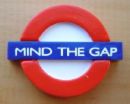 Click Here to Vote on Review at Amazon,
Click Here to Vote on Review at Amazon,
on Cover Above to Buy or Read Other Reviews,
I Respond to Comments Here or There


